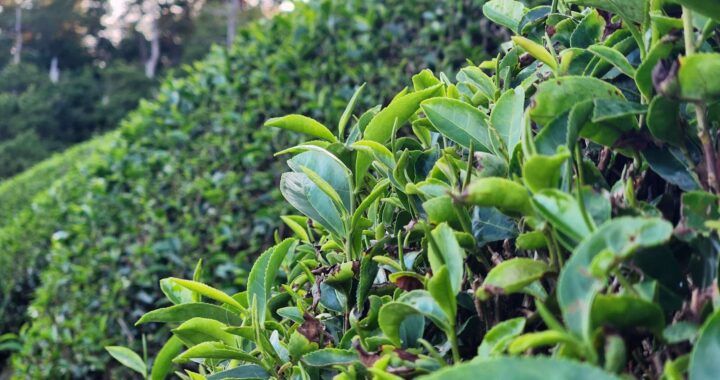Hello, I’m Holden (Intern #179). Getting the chance to work on a tea farm is a unique opportunity, so naturally I wanted to make as much tea as I could. At first I wanted to make post-fermented teas like awabancha since that seemed like an interesting project, however, after trying awabancha I learned I didn’t like the flavor or aroma. Rather than spend weeks of my time making a tea that at best I wouldn’t like, I chose instead to make a tea that I would actually enjoy drinking: oolong tea.
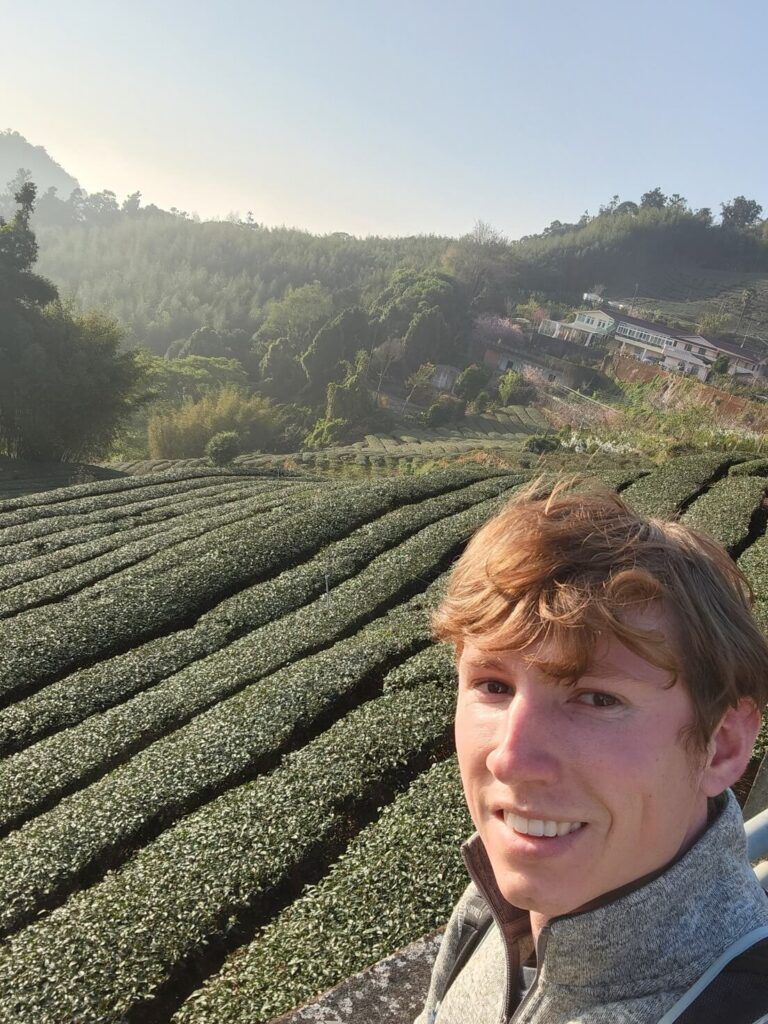
Previously I had visited Alishan in Taiwan, a region that is mainly known for making high mountain oolong tea. The high mountain oolongs are characterized by their extremely floral aroma and light oxidation. My goal with this project was to make the most floral oolong I could by experimenting with different processing methods and cultivars.
The first place I looked for information on oolong processing was of course the previous interns who worked at Obubu. I was in luck since a former intern, Nathan, had already made oolong tea and wrote a blog post about it. This gave me a great starting point for how to go about processing my oolong tea.
The next question I had was “Where do I pick the leaves?” Thankfully, Hiro-san had just the answer I needed. We went up to Monzen, one of our tea fields, and picked tea with tea tour guests. I picked around 100 grams of fresh leaves and shoved them in my pocket. This was the start of my oolong making journey.
Copying what Nathan had done, I sun withered my tea for around 45 minutes then put it inside to rest. After this, the tea had wilted and had become softer.
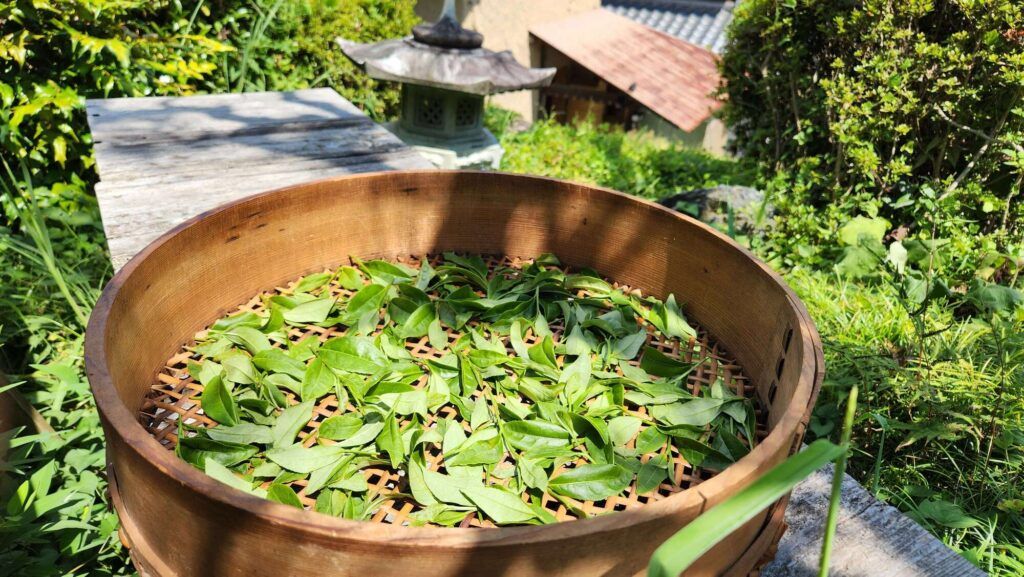
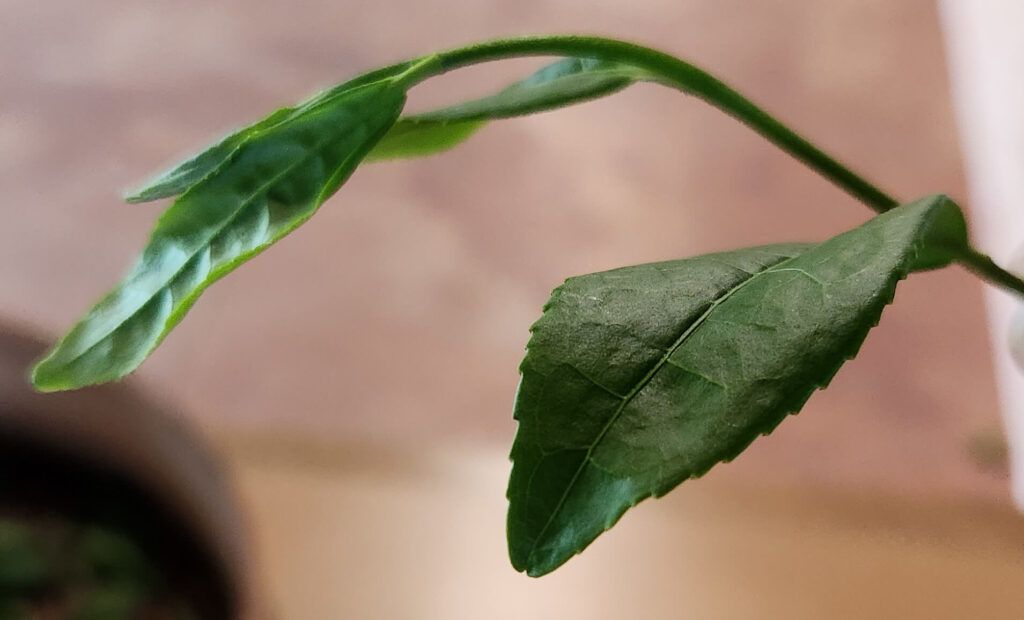
After resting for around 30 minutes inside, I began the bruising and oxidation step. I tossed the leaves in the basket at 1 hour intervals 4 times. Once the tea leaves had partially turned brown, I moved on to the next step: fixing. Fixing, also known as kill green, involves heating the leaves to deactivate the enzymes and stop oxidation. Since oolong tea is partially oxidized, when you perform this step is crucial to determining the flavor profile and aromatics of the final product. Another indicator my tea was ready was the amount of the leaf that had oxidized. To fix my tea, I cooked it over medium-low heat in a pan on the stove for 6 minutes.

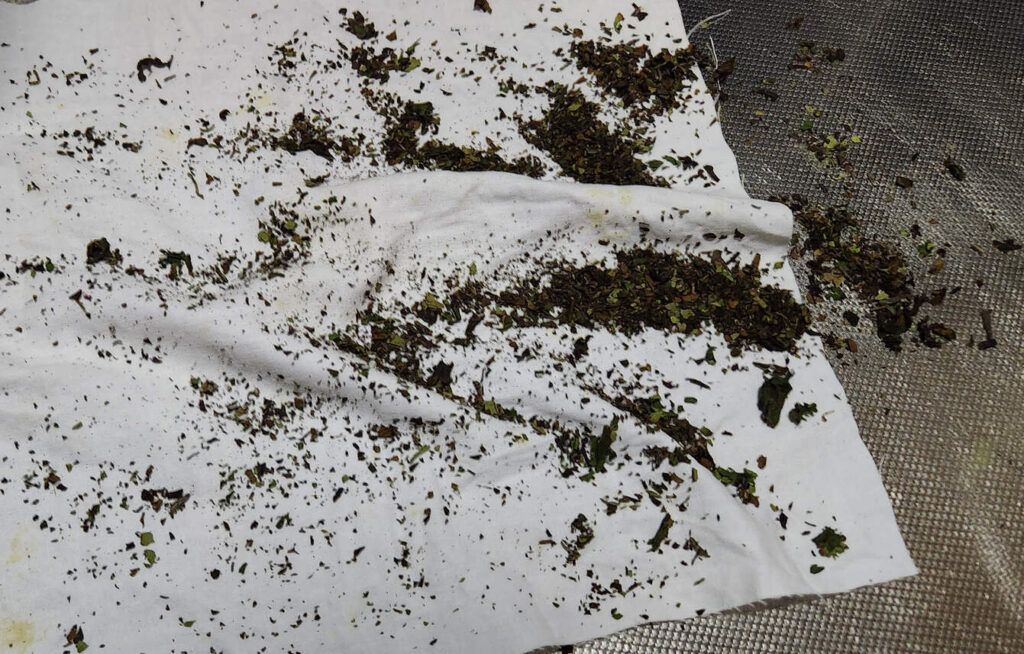
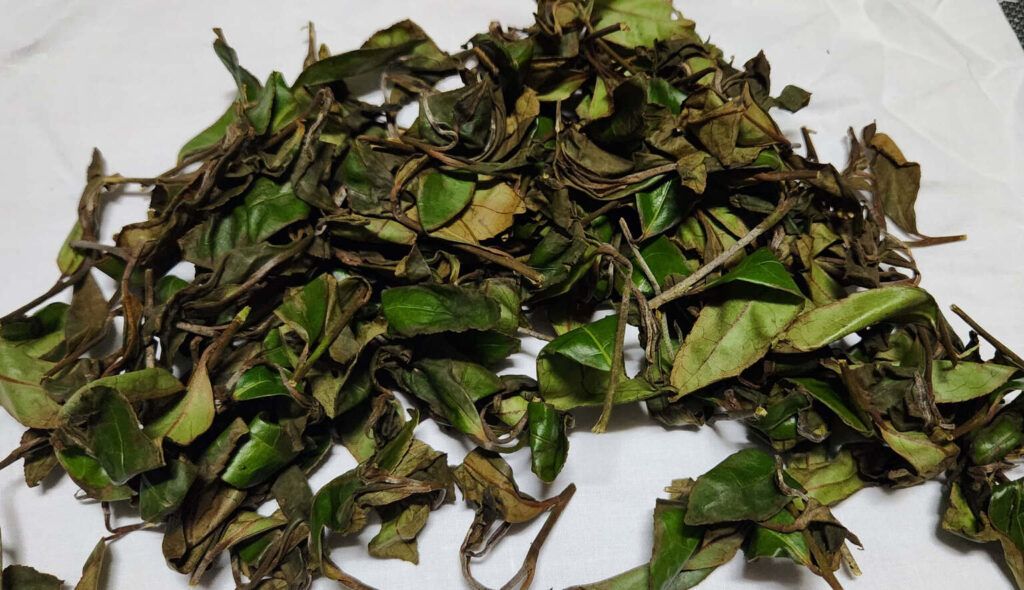
You can see by the leaves that many of the smaller ones are fully brown and have dried almost completely. Even when tenderly picking up the tea, I could hear lots of crunching! Not good. I had no clue how to go about rolling, so I just tried rolling the leaves back and forth in my hands to get some sort of shape, but the leaves were already too dry.
This created a lot of dust, so I just put the leaves back in the pan and continued drying them.
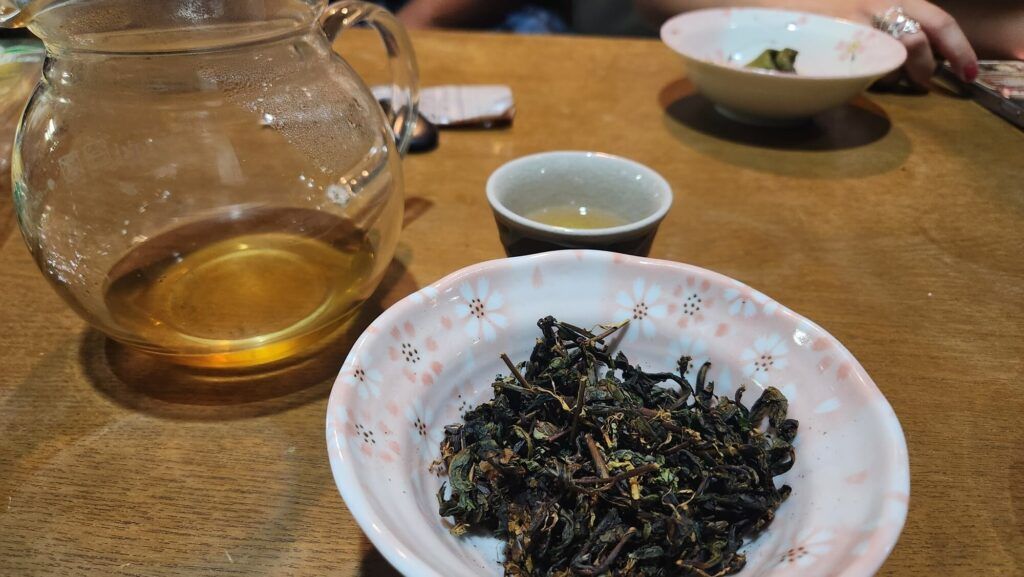
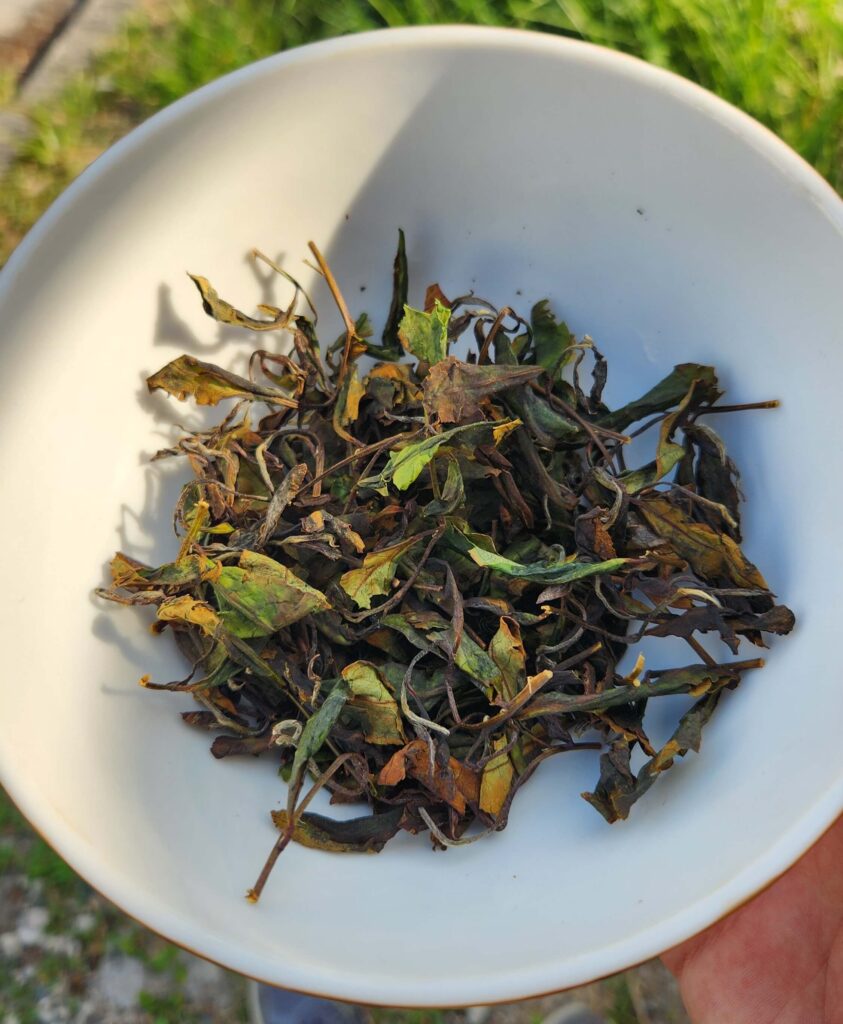
The final product was not totally dry. Some of the darker leaves still had moisture and were pliable. Overall, the tea had a decent aroma and was very mild in flavor. The color of the tea was a very bright yellow which indicates that I definitely made oolong and that it was probably on the lighter side of oxidation.
From then on I was hooked and proceeded to make my “pocket tea” 6 more times. Here are some of the things I learned.
- The unrolled tea was good, but hard to extract the flavor from. The rolled teas brewed stronger in less time and still had flavor after many brews compared to unrolled.
- I tried steaming the leaves instead of pan frying since the leaves had been too dry before. This affected the flavor and destroyed any floral aromas that developed previously. I learned later that steaming gives a more vegetal seaweed-like flavor to tea which is prized in Japanese green teas, but not so much in oolongs.
- Tossing the leaves in a basket is a lot of work, so I just tried crushing the leaves lightly in my hands. This led to uneven oxidation where some leaves got crushed more and oxidized a lot while others didn’t. It also bruised the leaf where it was damaged, so sometimes the inside of the leaf oxidized before the outside. While these aren’t ideal for making good oolongs, I didn’t really notice a difference in the final flavor or color of the tea using other oxidation techniques.
- Wanting to maximize my chances of success when rolling, I used a technique I had read that some farmers do where after fixing they put the hot leaves into an airtight container (link to website). This allows some of the steam to redistribute moisture more evenly around the leaf and “steam” it even though we are just using the moisture already inside the leaf.
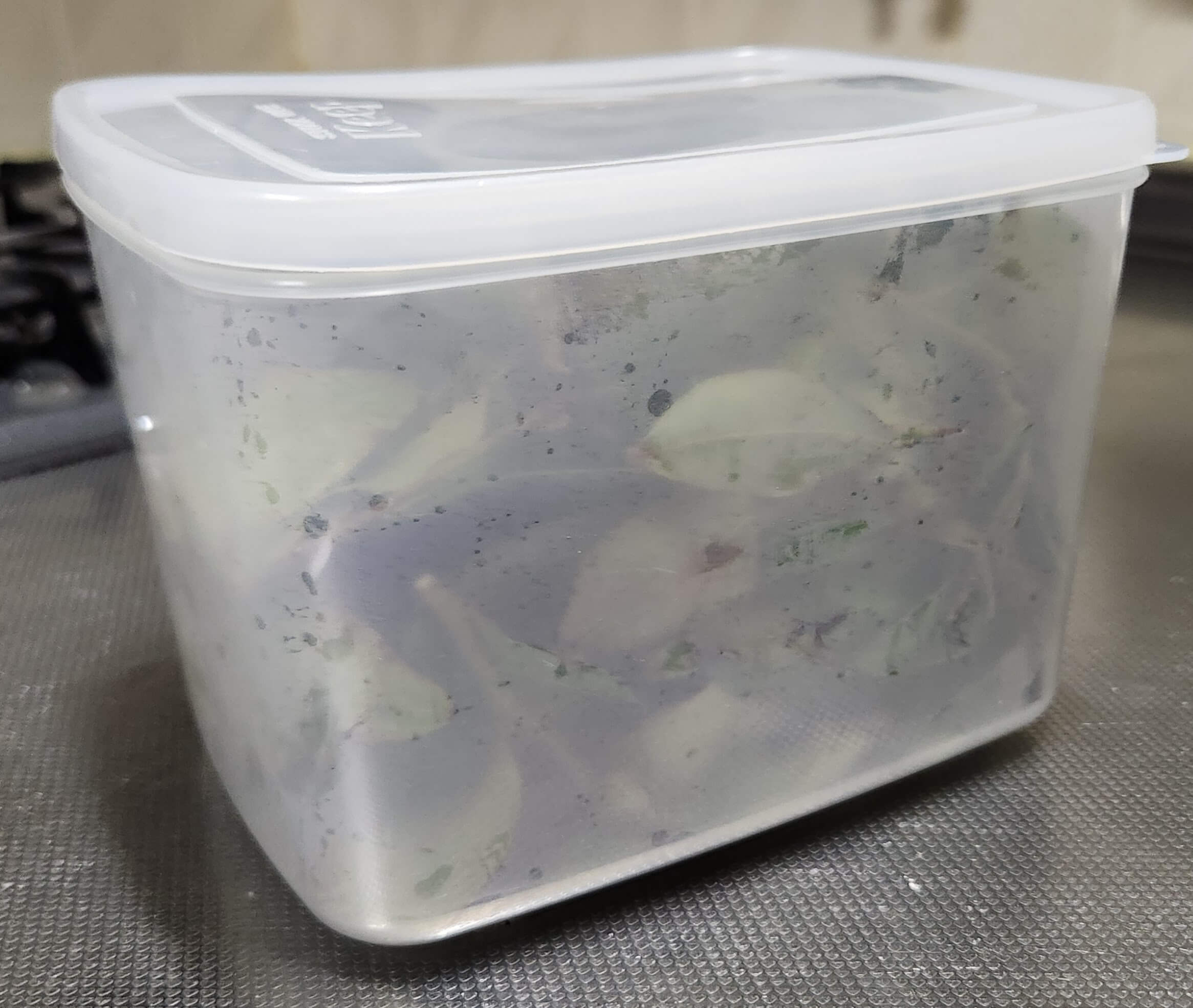 The container immediately clouded up with humidity and I left it for around a minute. The leaves were much softer after this step and easier to roll.
The container immediately clouded up with humidity and I left it for around a minute. The leaves were much softer after this step and easier to roll. - Moisture is key when trying to roll tea after pan frying. I started by picking the buds down to three or four leaves making sure they were all very soft and tender. I quickly learned that these leaves were the first to oxidize and dried out too much to be rolled. Small leaves and buds equals tea dust. When I started to pick bigger leaves, the rolling produced less dust and the leaves were more evenly oxidized. Also, cooking the leaves for too long dries them out quickly, so the leaves shouldn’t remain on high heat for long.
- For fun, I separated the stems and dust from the rolled leaves. Overall, it didn’t change the flavor much, but the tea dust brewed quickly and strong. I would make for a good tea bag.

- I rolled the tea by stuffing it in a cloth and tightly wrapping it so it formed a ball, then I would roll the ball around until it cooled, then heated it again in a pan and repeated the process. The more times I rolled the tea, the closer to a rolled ball the leaves were. The most rollings I ever did for one batch was maybe 12. To create a partial ball takes at least 20 rollings and a tight ball might require upwards of 40 which I never had the patience to try. I tried different rolling techniques, but never was able to notice a difference since the process is quite slow.
I learned a lot from this project and if nothing else it showed me how difficult making high quality tea is for someone with no experience. Akky-san is incredibly talented at what he does every day and I’m grateful to have been able to learn from him and all the other staff here at Obubu. That being said, I encourage anyone interested in tea to try making their own tea. There is no amount of studying and reading that can teach you how to make good tea. The only way to get better is to give it your best shot and learn from your mistakes. You’ve got this!

